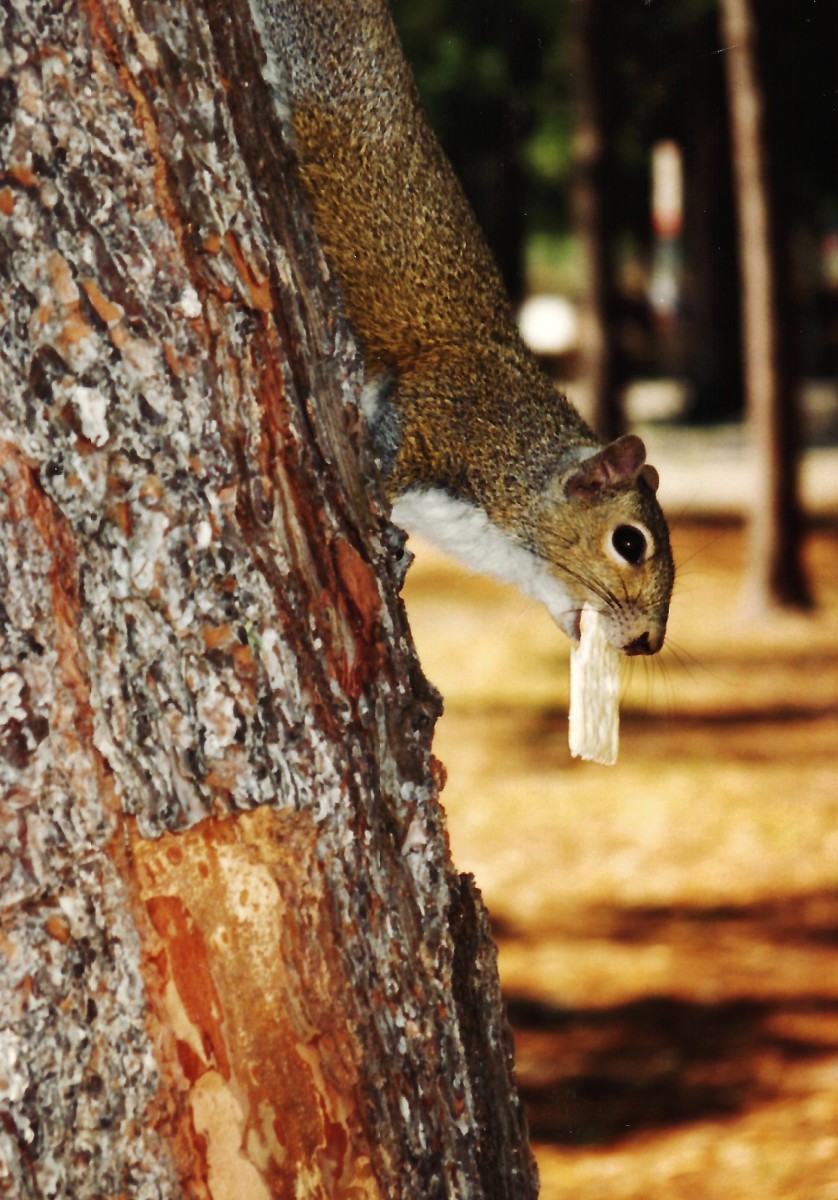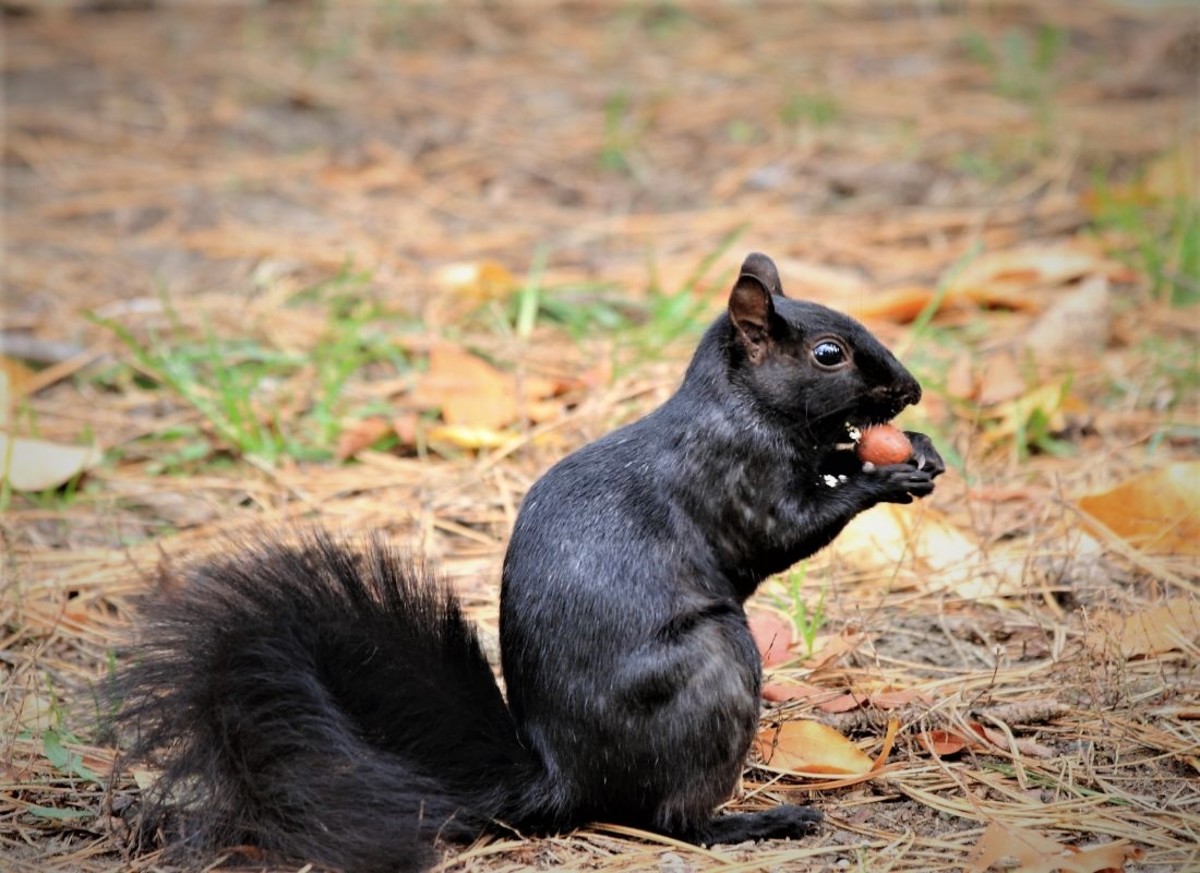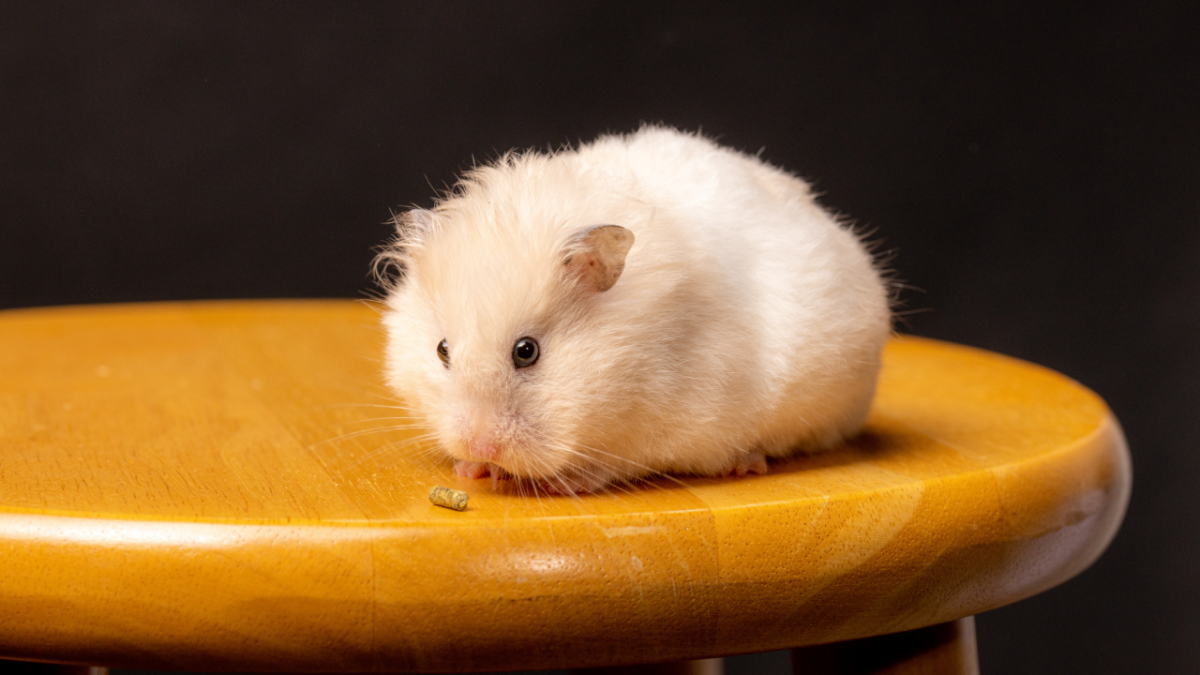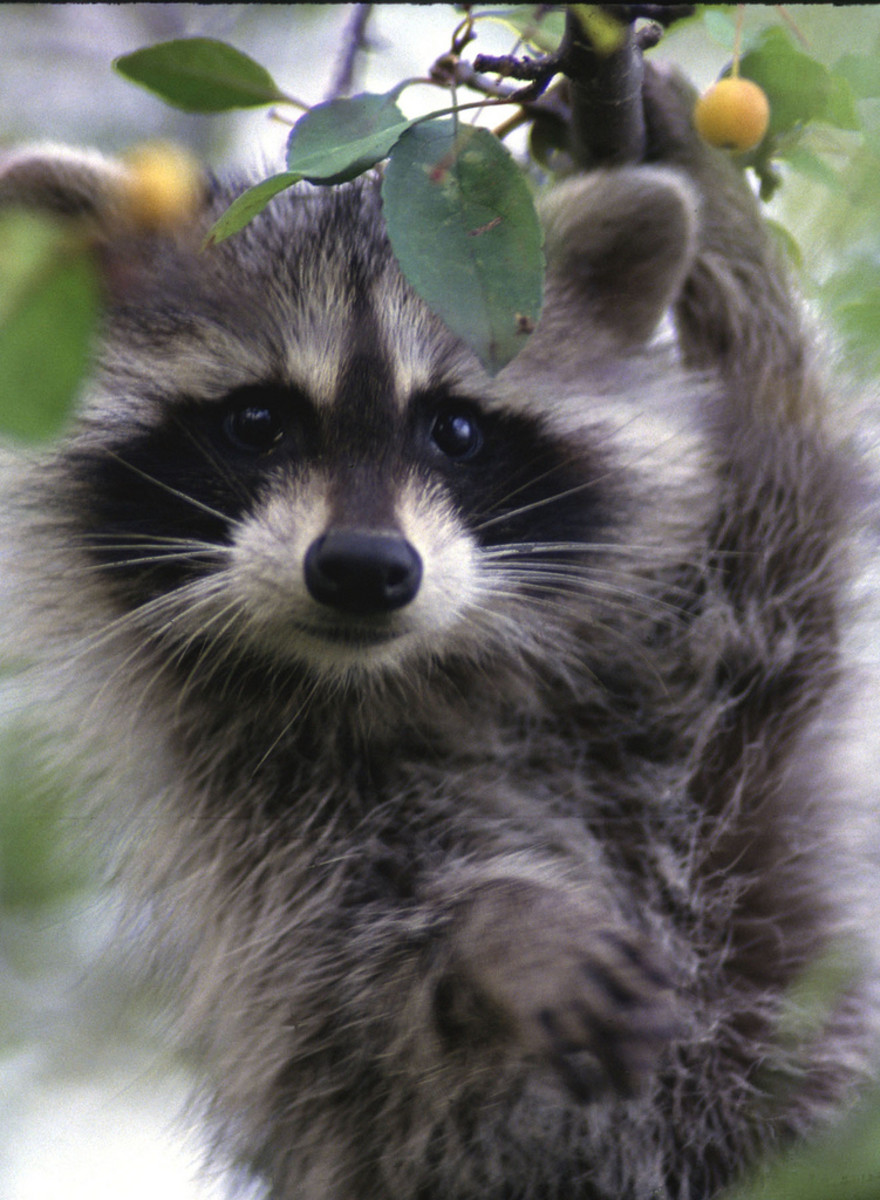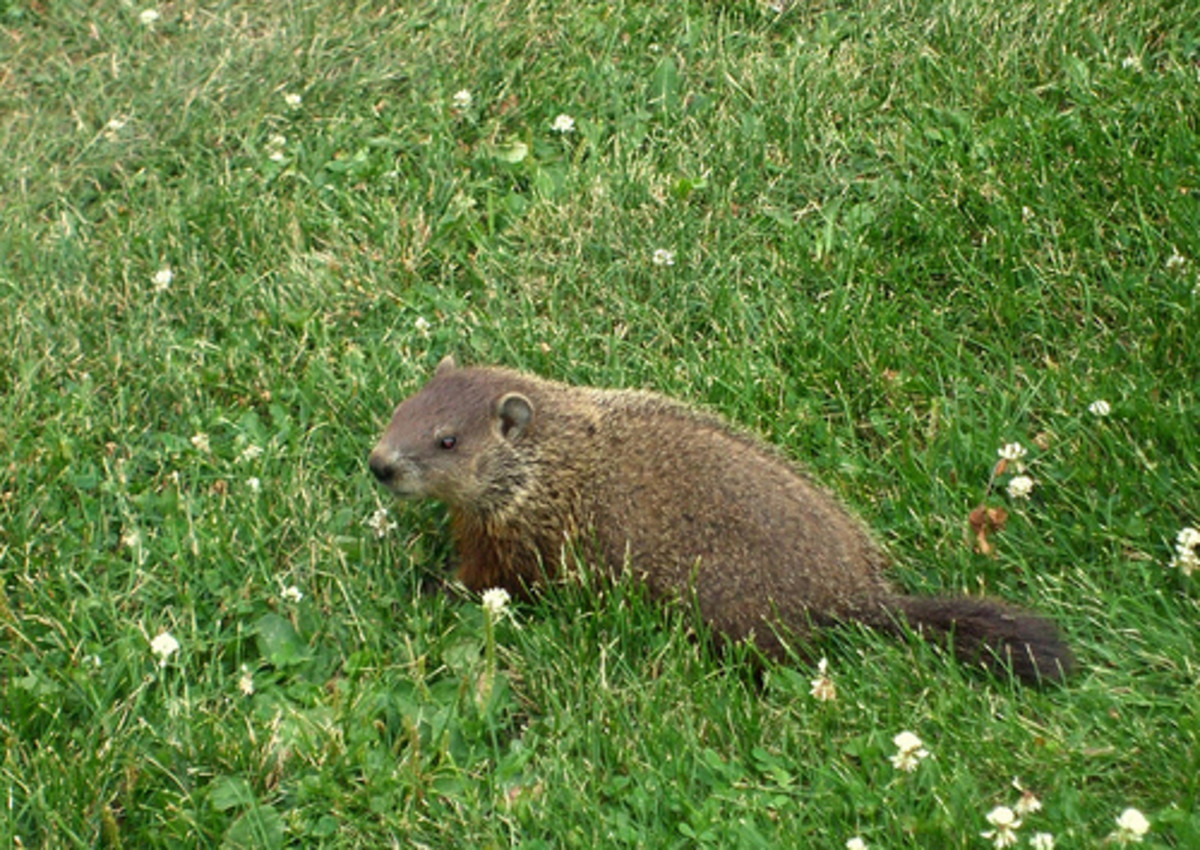I Didn't Even Know There Were Black Squirrels...
A Funny Thing Happened on the Way Through the Swamp Today...
So I am driving to work today when I see the craziest thing... A little jet black critter on the side of the road munching on an early morning snack. My first thought is "cat", but this fellow is sitting on his haunches holding his morning muffin (or acorn or cricket) in his little paws and chowing down in that simply adorable squirrel posture that any true animal lover cannot miss. And as I got closer it became clear that, yes, this was indeed a squirrel. A black squirrel. (And yes, he was a real little cutie!)
Now, I have seen plenty of gray squirrels in my life as well as plenty of reddish squirrels, but I had never seen a black squirrel. He was a first for me, so once I got to the computer, I decided to do a bit of research. It was exhausting work and taxed my Googling skills to the extreme, but in the end I persevered and finally am able to offer you the results of my "investigation".
Black Squirrels
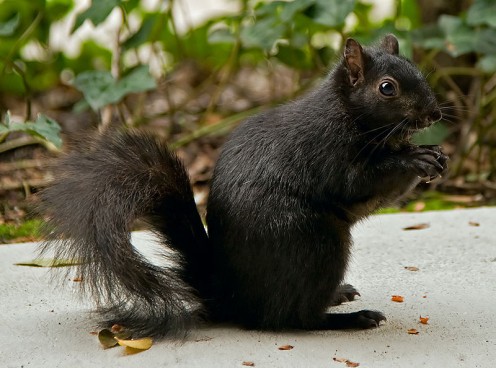
It turns out that what I actually saw this morning was just a melanistic variety of the common Eastern Gray Squirrel. I know what you are thinking. Same as I was... "What the heck does melanistic mean?" Never fear, my knowledge-hungry friends... I looked it up! Melanism, also known as melanosis is when there is an abundance of dark pigmentation resulting from the presence of melanin. This is a natural occurrence and two gray squirrels will often produce black furred offspring in their litters. So while rarer than grays, black squirrels really are not that unusual.
Gray Squirrels
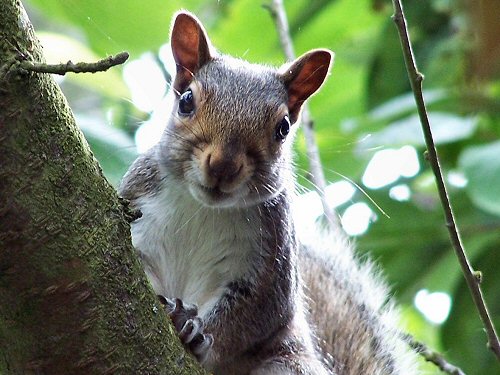
I was not surprised to find that here in North Carolina, the most common squirrel is the gray squirrel. The little buggers are everywhere -- in the woods, in the parks, along the roadsides, in my dad's tool shed, in my friend's attic... Yes, they can become a nuisance, but they sure look darling while they are ripping up your roof and gnawing their way through your floorboards and walls. These cute fellows can be found in practically any backyard in America within sight of a tree and are often very people friendly.
Fox Squirrels
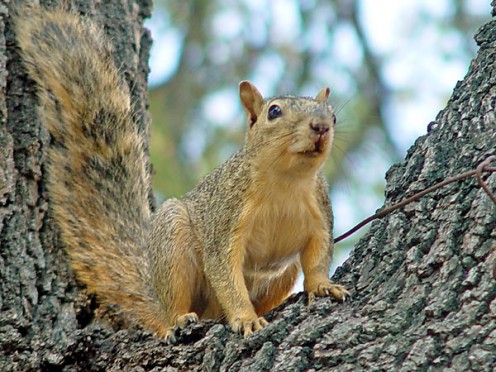
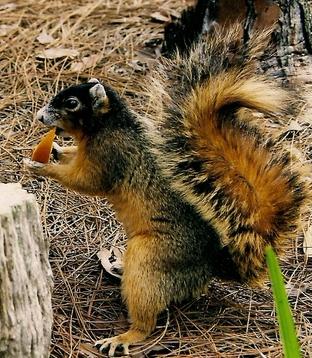
The fox squirrel looks very similar to the gray squirrel but has different coloration and is generally found in different areas than the gray squirrel. For one thing, fox squirrels do not have the white underbelly common to gray squirrels. They tend to have more variety in their coats with browns and yellows mixed in with their gray. Some fox squirrels also have darker colors as well that can create strikingly beautiful patterns.
Another difference between the grays and foxes is their geographical distribution. Gray squirrels are common in the eastern and mid-westerns sections of the United States up into the the southeastern parts of Canada. Fox squirrels are more common a bit further to the west down through Texas, up into the Dakotas and into the southern reaches of Canada though their populations do extend into the lower eastern United States as well.
White Squirrels
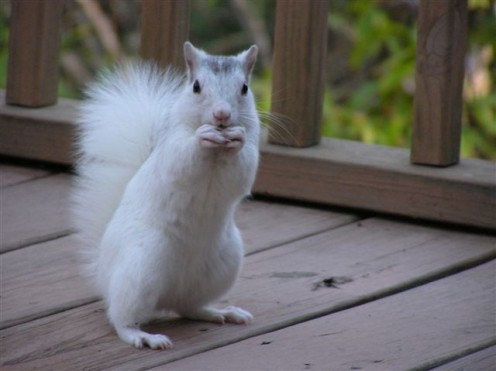
White squirrels it turns out, like black squirrels, are actually a variation of eastern gray squirrels. This variation is known as leucism, and like melanism, I had to look it up. As I suspected, it turned out to refer to a reduced amount of pigmentation causing the white fur. Unlike albinos, white squirrels can have a splash of color here or there. While certainly not as cool as black squirrels, the little fellows are kind of interesting. And while white squirrels are not albino squirrels, that is not to say that albino squirrels do not exist...
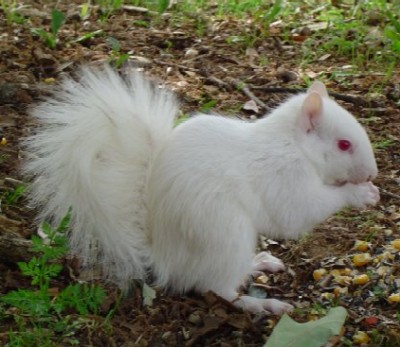
Albino Squirrels
Albino squirrels are often confused with white squirrels, but they are actually very different from their pale-furred cousins. White squirrels occur in nature as a routine variation of squirrel coloration while albino squirrels, as with albinos of other species including humans, have a recessive gene that limits their pigmentation. Albinos are recognized not only by their white fur but also by their distinctive pink eyes. Any squirrel can be an albino, but in reality he would still be a gray squirrel, a red squirrel a black squirrel or even a white squirrel, but he would have the recessive albino gene affecting his appearance.
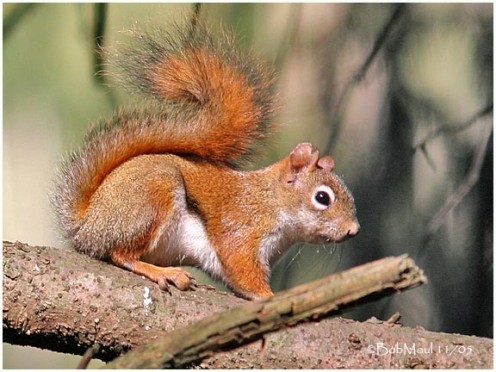
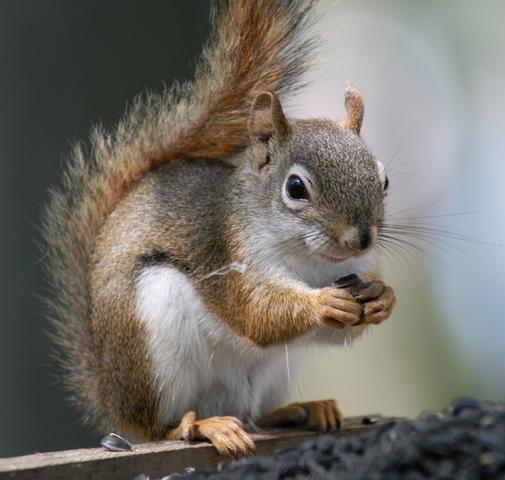
Red Squirrels
By this point, as I prepared to see what I could find on red squirrels, I almost expected to find out they were really gray squirrels with a condition known as scarletosis or something. But these guys are a completely different animal. Red squirrels are found in parts of Europe but in some areas their populations have been declining since the introduction of gray squirrels. Red squirrels are generally smaller and are sometimes mistaken for chipmunks. Despite being called red squirrels, they do sometime have gray coats.
Red squirrels are non-territorial and almost seem to the hippies of the squirrel universe. While they gather food caches during the year, they have reduced spatial memory which means they often cannot remember exactly where they buried those delicious nuts. But their feeding areas overlap so, though many caches may never be found, they have no problems sharing with their fellow squirrels and will just make do with what they find. Their mottoes seem to be "go with the flow" and "live and let live".
Pete the Purple Squirrel
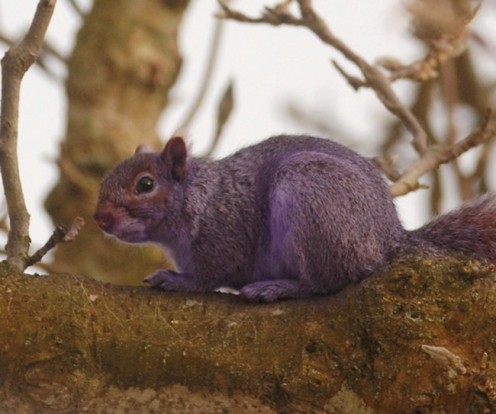
And finally, there is even a purple squirrel in the world, though the only things anyone seems to agree on about this fellow is that he is actually a common gray squirrel and that his uncommon coat is not a natural occurrence. Pete the Purple Squirrel is a bit of a celebrity at Meoncross School in Stubbington, Hampshire, in the United Kingdom where he first appeared a few years ago. There have a been a few theories developed to explain his coloring, though no one knows for sure.
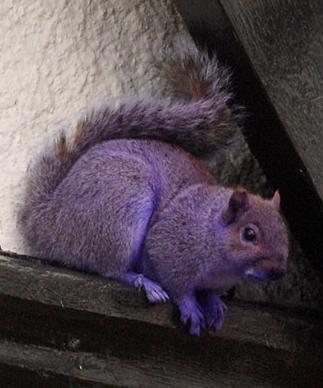
Some people believe that since he has been spotted inside a building where old printers are store, perhaps he managed to get into one of those printer and chew on a toner cartridge. He might then have transferred the hue to his fur through normal grooming. However, this theory is considered flawed due to the even coloration of his coat. It is unlikely he would have spread the ink over his entire body before it were all wiped from his tongue.
Another theory is that a biologist doing a study needed to keep track of Pete and used a harmless dye such as those often used for seabirds that need to be monitored. But this does not seem likely for while it would explain the even coat, squirrels who are being observed would usually be tracked using a radio-tag or microchip. Furthermore, if this were the case, the scientist responsible would most likely have come forward when the story made the news.
Then, especially considering we are dealing with a school full of kids, there is always the possibility of a practical joke being played by someone looking for a laugh. Such a prankster may have basically done the same thing a researcher would have done and dyed Pete purple and then simply let him loose on the grounds of the school where he would be likely to be spotted. Who knows? Maybe somewhere an Angus Young lookalike problem child is chuckling at his silly fellow students getting excited over a run-of-the-mill squirrel with a fancy hairdo!
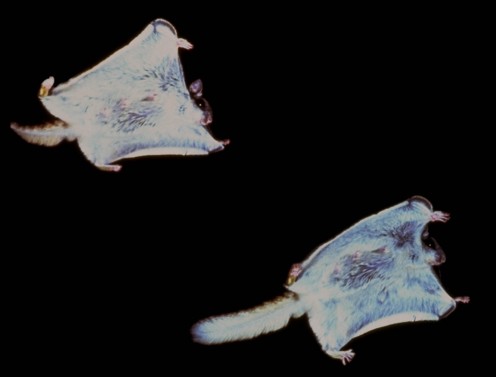
Flying Squirrels
Let's face it... no squirrel hub would be complete without some discussion of flying squirrels. The winged creatures can soar at speeds of almost 200 miles per hour and have been known to arm themselves with tiny spears they use to attack their prey. Their preferred food source is unicorn and occasionally a baby dragon when they want a hot meal. Okay! Okay! Sorry... Just got a bit squirrelly there.
In reality flying squirrels do not fly, but rather glide. They can glide up to about 300 feet though, so that is still pretty impressive. They are not commonly observed during daylight as they are primarily nocturnal. They are able to fly... er, I mean "glide"... thanks to a membrane attached between their wrists and ankles called the patagium. (Wow! We are just learning big words left and right today!) By moving primarily their wrists, a flying squirrel can change directions in midair. Generally they eat the same diet of fruits, seeds and insects as other squirrels though they do tend to like mushrooms. They have rarely been known to attack a unicorn.
Squirrel Facts
- Squirrels have four fingers on their front feet and five on their hind feet.
- There are hundreds of species of squirrels in the world.
- The oldest squirrel fossil is 35-40 million years old.
- Newborn squirrels are referred to as kittens.
- Females will breed with the strongest male but never the same male twice.
- Squirrels usually live alone but will share nests to conserve heat if needed.
- Male squirrels take twice as long as females to groom themselves.
- A squirrel will run back and forth attempting to confuse predators.
- This zigzagging method does not work well with most oncoming cars.

